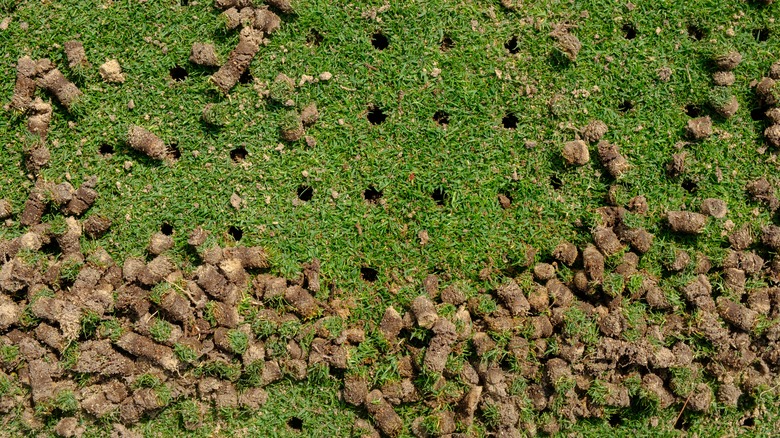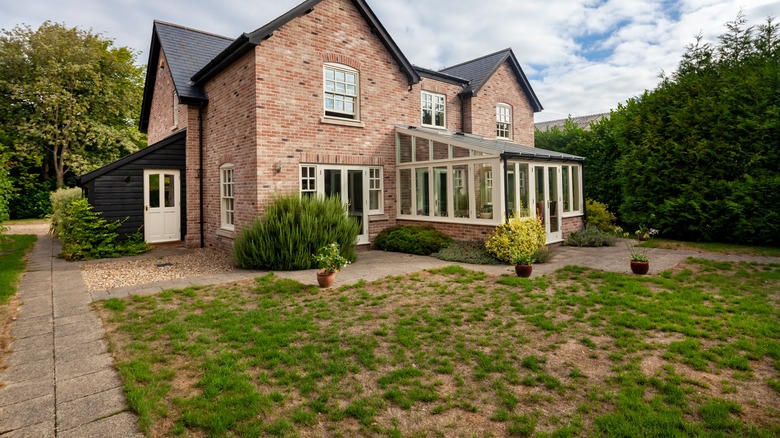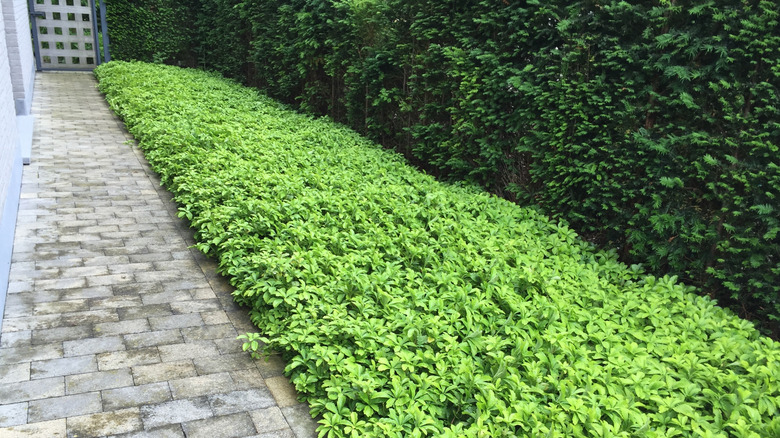What To Do If Aerating And Overseeding Didn't Fill In Lawn Patches
Putting in the time and effort required to aerate and overseed your lawn, only to see little to no benefit from your hard work, is disappointing. But it's not uncommon for homeowners to run into issues with the process — either by aerating a lawn that doesn't actually need it or getting the timing and technique wrong. You may be able to fix this by accurately diagnosing the problem to figure out why aerating and overseeding didn't deliver the results you expected. But it might be easier to ditch the grass and pick a low-maintenance alternative that likes your soil and climate just the way it is.
Common mistakes include aerating when it's too wet — which can end up making compaction worse — and aerating when it's too hot or dry. While aerating your lawn for healthier grass can help, the process does cause damage that your lawn needs to recover from. If you aerate while it's hot and dry, the already stressed grass may not be able to recover from the additional drying effects of the open holes you just created.
It's also important to time aeration for when grass is actively growing so it can recover quickly. You might do more harm than good if you aerate while the lawn is still dormant, before new sod has had time to establish, or late in the season when grass won't have enough time to grow before going dormant for the winter. But if you know you did everything right and your grass is still struggling, it either means the problems aren't related to soil compaction or your yard just doesn't have the right growing conditions for grass to thrive.
Tips for figuring out what's actually wrong with your lawn
Lawn aeration is done to fix compacted soil. If your soil isn't compacted, then those thin or brown patches in your yard won't go away even if you aerate perfectly. In some cases, it might be as simple as fixing your irrigation or mowing routine because incorrect irrigation and mowing the grass too short can cause thin, brown, or patchy lawns.
When watering, water deeply but infrequently — providing the full inch of water needed per week in a single application. Light, frequent watering encourages roots to grow near the surface, where they're less efficient at absorbing water and nutrients from the soil. As for mowing, cutting your grass shorter than 2 inches or taking off more than a third of its height in one go can stress your lawn, especially in hotter or drier months.
If your mowing or irrigation routine is on point, then your soil might just be inherently poor-draining. The issues caused by compacted soil can look similar to issues caused by poor drainage. But if you have heavy clay or your yard is in a low-lying or swampy area, aeration won't change the composition or location of your soil. Instead, fix the soil structure by applying compost or other organic matter and minimizing tilling, aerating, and other activities that provide a temporary fix, but ultimately degrade soil structure over time. Start by adding compost to your recently aerated lawn so it can penetrate into the holes. But continue topdressing your lawn with compost annually.
Fill patches with lower maintenance lawn alternatives
If your grass just refuses to thrive no matter how much work you put into it, it might mean that area just isn't really suited to grass. Instead of constantly fighting the conditions in your yard, consider replacing the struggling turf grass with a species that actually thrives there. If you live in a dry climate, for example, you can plant drought-resistant grass alternatives that will create a lush, green ground cover that isn't nearly as high-maintenance as your thinning grass was. If your lawn doesn't get enough sun, there are also stunning lawn alternatives for your shady backyard that will happily grow in those light conditions.
The key is to accurately identify the light, soil, and moisture conditions that already exist in your yard and look for species that like to grow in those conditions. Then, narrow down your choices by thinking about how you use that space. If you just want a ground cover for the aesthetics, but don't plan to actually walk in the area often, you can convert the lawn into a multi-species meadow of low-growing foliage and flowers. If you have kids or pets that play on the lawn, you'll need something that tolerates foot traffic. That might be as simple as switching to a blend of native grasses or sedges that are better adapted to your climate.


